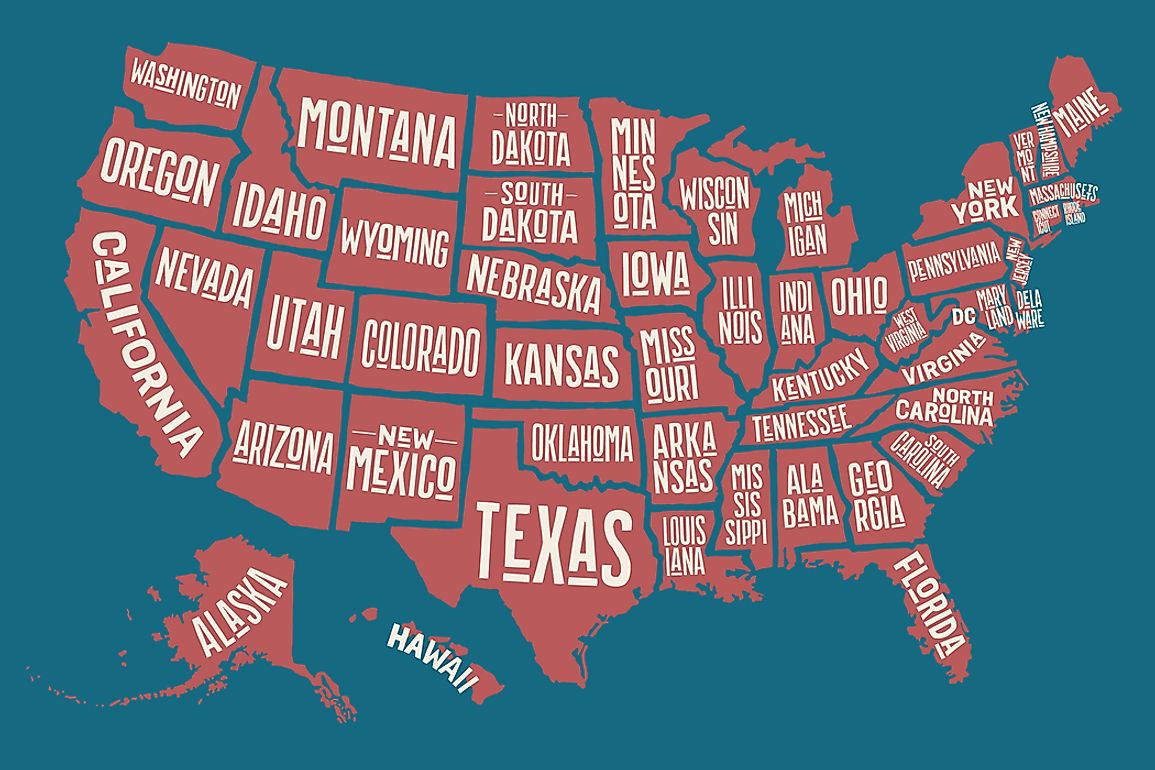The Singly Landlocked States Of The United States

A singly landlocked state has to cross the border of another state to access the nearest gulf, sea, ocean, or bay. There are sixteen singly landlocked states; ten are doubly landlocked while Nebraska remains the single triply landlocked state. Hawaii is the only US state that is an island. Forty-eight of the fifty states are contiguous except for Hawaii and Alaska. The state of Hawaii is the only US state that is located in Oceania and not North America. The District of Columbia is also singly landlocked.
The Singly Landlocked States of the United States
Arizona and Arkansas
The Pacific Coast is accessible from Arizona through the states of California while the Gulf of California is accessible through the Mexican state of Sonora. A Narrow strip of land on the Mexican state prevents Arizona from accessing the Gulf without crossing the international boundary. Arkansas can access the Gulf of Mexico by crossing either Texas, Louisiana, or Mississippi. However, Louisiana offers the shortest route to the Gulf compared to the other two states.
District of Columbia and Idaho
The District of Columbia is the capital of the U.S; it was created on July 16, 1790, after the states of Maryland and Virginia both ceded land for the creation of the Unions capital. The capital can access the Atlantic by crossing either state. Idaho, on the other hand, Idaho can access the Pacific coast by traversing either Oregon, Washington, or the Canadian Province of British Columbia. Washington and Oregon offer the shortest distance with fewer restrictions compared to the coast of British Columbia that is further and involves crossing an international boundary.
Kentucky and Michigan
The State of Kentucky can access the Atlantic Ocean by traversing through the State of Virginia. However, the state can also cross into Illinois or Indiana to access Lake Mississippi, and Ohio to access Lake Erie. Michigan can access the James Bay in Canada through the Province of Ontario. However, Michigan borders four of the five Great lakes except for lake Toronto. The Great Lakes link the state to the Atlantic Ocean through the Saint Lawrence Seaway.
Minnesota and Montana
To access the Hudson Bay, Minnesotans have to travel across the province of Manitoba, or Ontario to access the James Bay. However, Minnesota has direct access to Lake Superior which allows the state to access the Atlantic Ocean through the Saint Lawrence Seaway. Montanans, on the other hand, have to go through the Province of British Columbia to access the Pacific Coast. However, the shortest route to the Pacific takes Montanans through Idaho and Washington states.
Nevada and New Mexico
To access the Pacific coast, Nevadans have to traverse through either California or Oregon. New Mexicans, on the other hand, have to cut across Texas to access the Gulf of Mexico. Alternatively, New Mexicans can access the Pacific by crossing the international boundary into Sonora and into the Gulf of California.
North Dakota and Ohio
Ohio can access the James Bay through the Province of Ontario on the Canadian side of the border. However, the state borders Erie which connects it to the Atlantic Ocean through the Saint Lawrence Seaway. North Dakota can access the Hudson Bay through the province of Manitoba. Due to the international boundary and the distance to Hudson Bay, the shortest distance to the Atlantic is through Minnesota to Lake Superior.
Oklahoma and Pennsylvania
Oklahomans have to cut across Texas to access the Gulf of Mexico. The Pacific coast is much further but is accessible through New Mexico, Arizona and into California. Pennsylvania, on the other hand, has several options for accessing the Atlantic Ocean, either through Delaware, New York, Maryland, or New Jersey. The state can also access the James Bay through Ontario. Pennsylvania has direct access to Lake Erie, but the Saint Lawrence Seaway is a much longer route to the Atlantic.
Tennessee, Vermont and West Virginia
Tennesseans access the Atlantic Ocean either through North Carolina, Georgia, or Virginia. Alternatively, they can access the Gulf of Mexico through Alabama and Mississippi. Tennesseans can also go through Kentucky then to either Indiana or Illinois to access Lake Michigan. Vermonters access the Atlantic through Massachusetts, New York, or New Hampshire. They can also cross the international boundary into Quebec to access the Hudson, and James Bays. West Virginia access the Atlantic through Virginia or Maryland.











